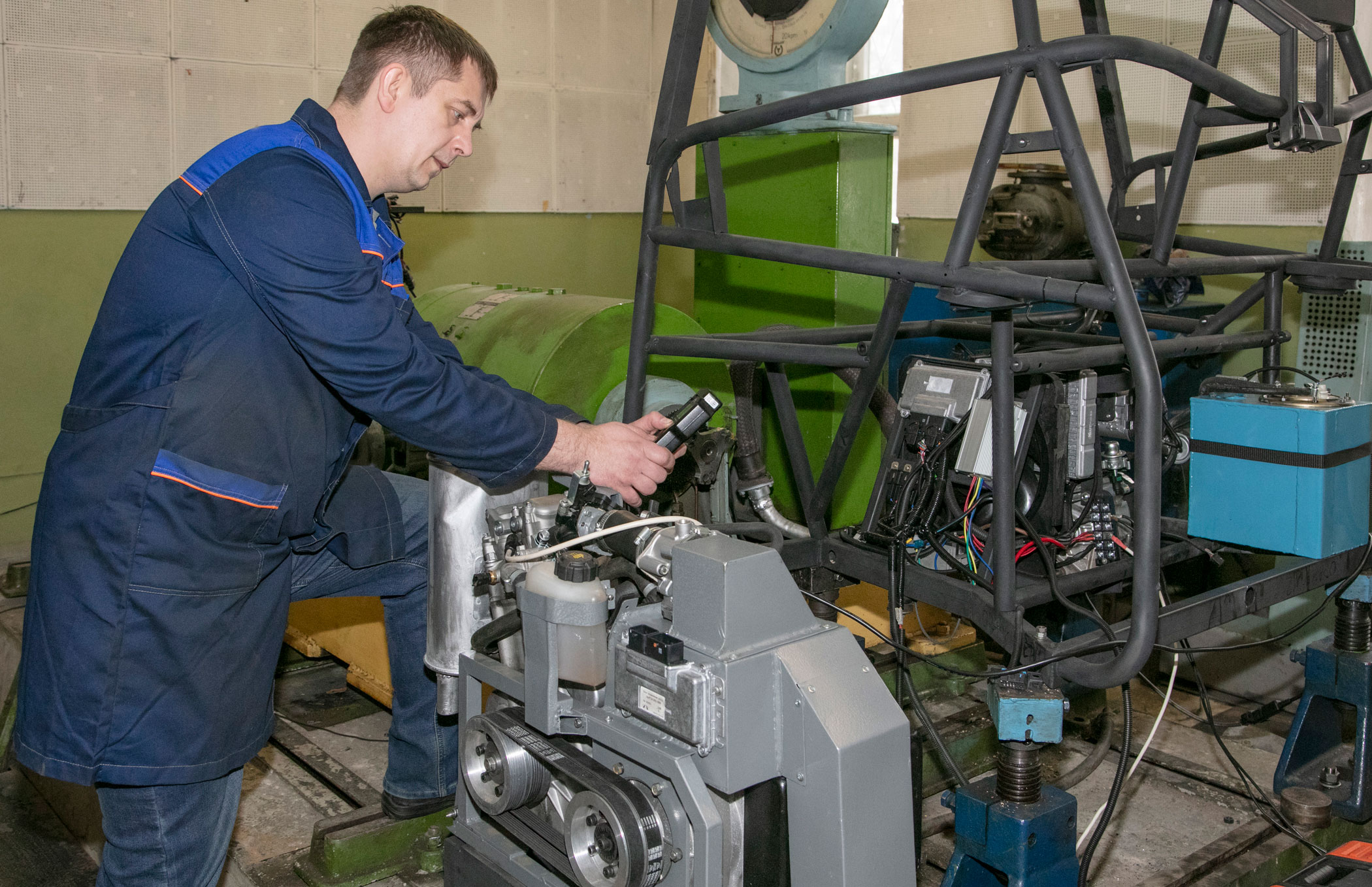Togliatti State University (TSU) scientists have completed the development of the Range Extender (RE) platform for ZETTA City Module electric vehicles. This power unit enables to increase the autonomous mileage of an electric car by 1.5-2 times. Its technological effectiveness and simplified manufacturing compare it favorably with imported analogues.
The development was supported by the 4 million rubles grant which the Institute of Mechanical Engineering of TSU received in September 2020 as the winner of the competition for innovative projects by the Innovation Fund of the Samara Region.
Range-extended electric vehicles (REEV) are a cross between a plug-in hybrid electric vehicle (PHEV) and an electric vehicle itself. They work only on electricity but they have a generator for charging the battery which is able to eliminate the main disturbing factor for the driver – the limited vehicle range. As a result, the electric engine is used for short distances along the usual routes. While driving for longer distances and the batteries are out, the driver starts the internal combustion engine that powers the battery of the electric car.
There are many advantages of such spare power unit. It can be used in the car as an option while driving long distances. When using the Range Extender platform, 1 liter of petrol gives about 2.5-3 kWh of energy, so a 5-liter tank is equal to 15 kWh which provides a mileage of about 150-200 kilometers.
The batteries are recharged on the go thus saving time. In addition, the generator is operating in continuous mode, so the engine efficiency is higher than that of traditional power units.
The Range Extender is also advantageous from the economic point of view – its cost is about 100 thousand rubles, while the cost of batteries with a capacity of 15 kWh can be as much as 150 thousand rubles or even more, according to experts.
BMW, Audi, MAHLE and others use RE in the production of their electric cars. The distinctive features of the technical solutions proposed by TSU scientists in comparison with the foreign ones are: the standardized design with the current component base available in the automotive market; minimal interference in the design of the power unit; technological effectiveness and simplified manufacture of REEV.
This market has not yet been developed in Russia although such a generator is more than relevant for Russian weather conditions: the battery drains quickly while severe winter frost and needs to be recharged. Moreover, the distance between Russian cities is much greater than in Europe.
“The main requirements for RE are relatively lightweight, sufficient power for charging the batteries, automation and compactness,” explains Denis Pavlov, the project manager and the head of the Department of Power Machines and Control Systems. “We had a task to create the unit that is as unified as possible with the domestic manufacturers.”
As a result, TSU engineers developed two prototypes. The first one is for ZETTA City Module electric vehicles with its maximum power of 3.5 kW.
“The unit is built into the trunk and saves space; its size is about 60x60x40 cm and its weight is about 60 kg. Among its main features are domestic sensors, domestic engine control system, and domestic software. Unfortunately, the rest of the components are not produced in Russia but they are available on the market,” says Denis Pavlov.
The power unit runs on petrol, but according to studies conducted in Europe in 2018-2019, the toxicity characteristics of the RE platform and the hybrid are approximately the same. The platform complies with the environmental standards for limiting the emissions of Stage engines that are currently operating in Europe.
“The engine itself is small, so it consumes little fuel, and the requirements for it are less demanding,” explains Denis Pavlov. “Eventually, the generator will be certified together with the vehicle as its component.”
When designing, the developers provided the possibility of product diversification for use as an independent power unit running on natural gas. Therefore, the second prototype was also developed with its maximum power up to 10 kW.
TSU engineers were assisted by the employees of the small innovative enterprise
SHTAT as well as TSU industrial partners
Abit (St. Petersburg),
Mika Motor (Dimitrovgrad) and
SOLLERS Engineering Togliatti.
“There is already a customer for the platform –
ZETTA company, the manufacturer of electric vehicles which provided TSU with an electric car for the generator test. Other companies are also interested in this project,” says Denis Pavlov. “We also plan to install RE in our development – an electric frame-modular corrosion-resistant all-terrain vehicle
Sergeant (TSU is currently designing the third series of the vehicle).”
Bloomberg analysts predict 11 million of RE being produced by 2028 and the emergence of a new large market comparable to the electric car market.
The analysis of the technological and production capabilities of enterprises in Samara region suggests that the region has all the conditions for the creation and successful development of this area of work. There are enough car manufacturers, automotive components and electrical products manufacturers, engineering personnel, etc.
Electric Transport is one of TSU projects in
Engineering of the Future, the world-class Scientific and Educational Center. This center created a committee on electric transport headed by Denis Schurovsky, CEO of
ZETTA Company. Denis Pavlov, the Head of the Department of Power Machines and Control Systems in TSU, became his deputy.
